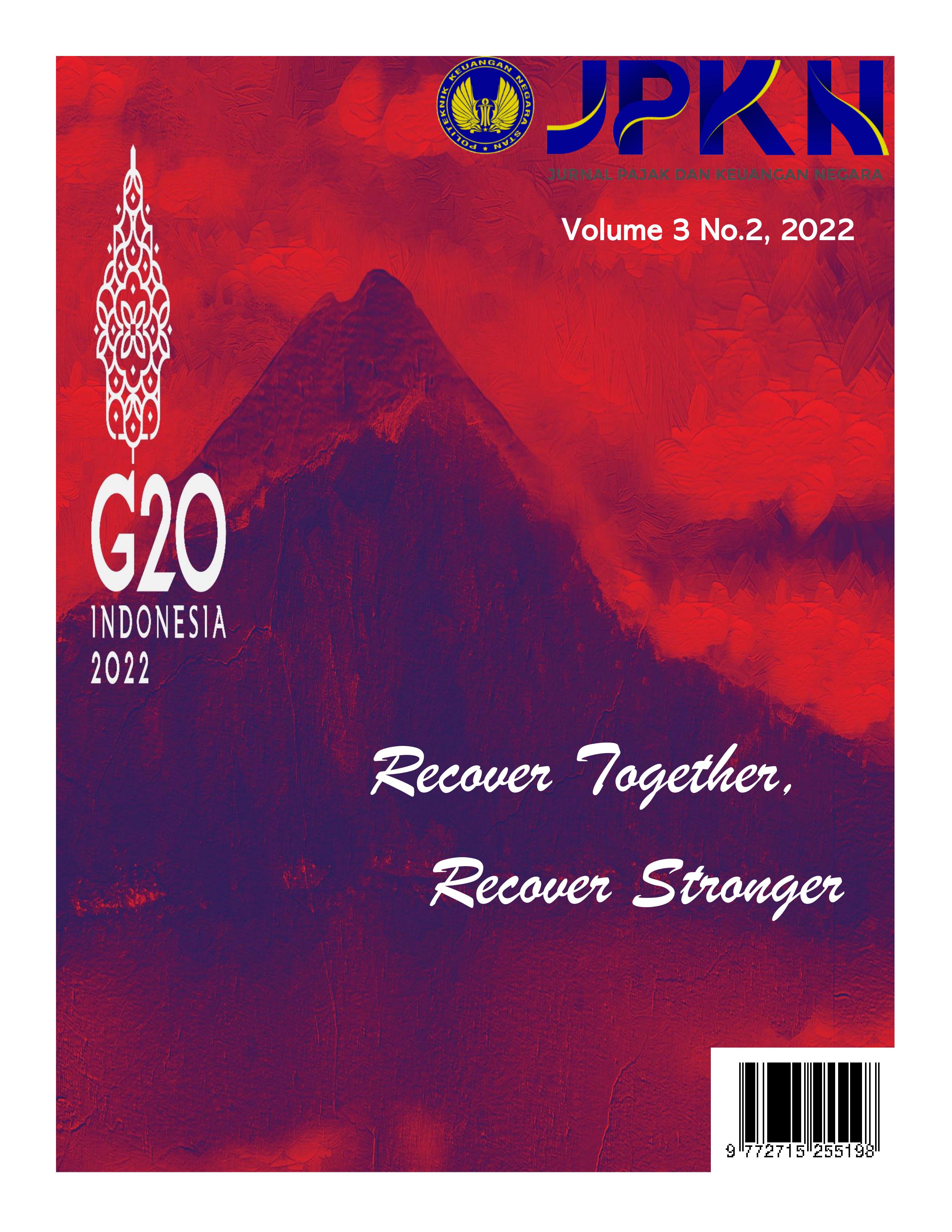Identifikasi Kendala Dengan Kolaborasi Theory Of Constraints Dan Supply Chain Management
DOI:
https://doi.org/10.31092/jpkn.v3i2.1227Keywords:
Theory of Constraint, Supply Chain Management, Collaboration, Social Value, EfficiencyAbstract
This study aims to find out the collaboration between Theory of Constraints (TOC) and Supply Chain Management (SCM) at a manufacturing company, especially that produces infusions. This is a qualitative research with interpretive approach. The collaboration between TOC and SCM is to identify on overall company constraints such as internal constraints on production process as broken machine, power outage, and ineffective production process flow, and external constraints related to suppliers and customers such as defective raw materials, delays in the delivery of raw material, and delay transportation of shipping to customer. The company overcomes the constraints by providing solutions as quickly as possible. The solutions that are provided by the company are scheduling engine maintenance, power outage schedules, providing generators, and port schedules. They may require no small cost, but customers’ satisfaction is the most important thing. The factors that influence the constraints are human, time and technical. This research also explores the social values ​​adopted by the company by donating to victims of natural disasters and donated to the employees’ family. Based on the evaluation of all the aspects, it can be concluded that company efficiency is not the basis for being judged materially.
References
Anatan Lina dan Ellitan Lena. (2008). Supply Chain Management Teori dan Aplikasi:Edisi kesatu.Bandung:Alfabeta.
Amin, Widjaya, Tunggal. (2004). Perilaku Konsumen dan PemasaranStrategik, Jakarta: Harvarindo
Ariska, Wulansari, A., & Gusminto, Eka, B. Wahyono, H. (2016). Evaluasi Kinerja Supply Chain Management (SCM) pada UD. Asri Bakery Semboro.
A. Was Christopher. (2011). “Inhibition of Ambiguous Word Activation In the Context of a Working Memory Taskâ€. Macrothink Institute. ISSN.Vol.3(1).
Blocher, E. J., Chen, K. H., dan Lin, T. W. (2000). Manajemen Biaya. Terjemahan oleh Susty Ambarriani. Penerbit Salemba Empat, Jakarta.
Blocher et al., (2011). Manajemen Biaya Penekanan StrategisJilid 1 Edisi 5. Jakarta: Salemba Empat.
Bustami, Bastian dan Nurlela. (2009). Akuntansi Biaya.Edisi Pertama. Jakarta.Penerbit : Mitra Wacana Media.
Carter, William K. akuntansi Biaya. (2009). Edited by Ishardini Dewi J. Translated by Krista. Vol. 1. Jakarta: Salemba Empat,
Carter, William K dan Usry, Milton F. (2014) . Akuntansi Biaya. Diterjemahkan oleh Krista. Buku 1. Edisi Keempat Belas. Jakarta: Salemba Empat
Ceniga, Sukalova. (2014). Application of the Theory of Constraints in Supply Chain. Applied Mechanics and Materials, 708, 13–19.
Didiek S. Wiyono & Yusep Rosmansyah. (2008). Review Peranan Teknologi
Dwihapsari, Ester Ratih dan Yanti Murni. (2017).“PengaruhPositioning,Diferensiasi dan Citra Merek Terhadap Keputusan Pembelian Buku Mimpi Sejuta Dolar dengan Promosi Sebagai Variabel Interveningâ€.Jurnal Ilmiah WIDYA Ekonomika, Universitas Mercu Buana, Vol.1 No.2.
Fagundes, R., Augusto, F., & Marins, S. (2010). A Real Application of the Theory of Constraints to Supply Chain Management in Brazil Technological Institute of Aeronautics ( ITA ), São José dos Campos , Brazil. 7(2), 81–100.
Hall, James A., (2012), Accounting Information System, Ohio:South-Western Publishing Co.
Hansen dan Mowen. (2001). Akuntansi Manajemen Biaya Jilid 2. Jakarta: Salemba Empat.
Hansen & Mowen. (2005). Management Accounting 7th Edition. Singapore : South-Western of Thomson Learning. Dialih bahasakan oleh Fitriasari,Dewi. Arnos, Deni. (2006). Akuntansi Manajemen. (Edisi Tujuh).Jakarta : Salemba Empat.
Hansen, Don R., and Maryanne M. Mowen (2015). Akuntansi Manajerial.8. Edited by Lulu Alfiah. Translated by Deny Arnos Kwary. Vol. 1. Jakarta: Salemba Empat,
Heizer, Jay & Barry Render (2011). Manajemen Operasi.Edisi Sembilan. Buku Dua. Diterjemahkan oleh Chriswan Sungkono. Jakarta: Salemba Empat.
Janvier, James, A. M., (2012). A New Introduction to Supply chains and Supply chain management: Definitions and Theories Perspective, Internatio-nal Business Research Journal, 5(1): pp. 194-207.
Kamayanti, Ari. (2016). Metodologi Penelitian Kualitatif Akuntansi: Pengantar Religiositas Keilmuan. Penerbit : Yayasan Rumah Peneleh, Jakarta Selatan
Lu, Dawei. (2011). Fundamentals of Supply Chain Management. Denmark: Ventus Publishing Aps.
Min, Hokey (2015). The Essential of Supply Chain Management: New Business Concepts and Applications. Pearson FT Press.
Mulyadi. (2015). Akuntansi Biaya, Edisi5. Yogyakarta: Sekolah Tinggi Ilmu Manajemen YKPN.
Ratih, N. R. (2018). Penerapan Theory of Constraint (TOC) untuk meningkatkan profitabilitas pada perusahaan Bakpia Latief di kota Kediri Eky Syuraika Cendekia Akuntansi Vol . 6 No . 3 , September 2018. 45–53.
Setyaningrum, R. M., & Hamidy, M. F. (2008). Analisis Biaya Produksi Dengan Pendekatan Theory of Constraint (Rina M.S.) 26. 8(1), 26–36.
Siagian, P. Sondang. (2005). Fungsi-fungsi Manajemen. Jakarta. Penerbit Bumi Aksara.
Sihadi et al., 2018. (2018). Jurnal Identifikasi Kendala dalam Proses Produksi dan Dampaknya terhadap Biaya Produksi pada UD. RISKY Vol. 13 No. 4 602-609
Sih Darmi Astuti dan J.Widiatmoko. (2003). Profil Usaha Kecil Menengah (UKM) Di Jawa Tengah, Jurnal Fukus Ekonomi, Vol 2, No.3, Desember 2003.
Sugiyono. (2016). Metodologi Penelitian Kuantitatif, Kualitatif, dan R&D. Bandung: CV Alfabeta.
Sujarweni, V. Wiratna. (2015). Akuntansi Biaya.Yogyakarta: Pustaka Baru Press.
Sukirno, Sadono. (2013). Makroekonomi : Teori Pengantar. Jakarta : PT. Raja Grafindo Persada.
Simsit, Vayvay. (2014). Theory of Constraints: A Literature Review. Procedia - Social and Behavioral Sciences, 150(231), 930–936.
Umble, M., Umble, E., & Murakami, S. (2014). International Journal of Production Implementing theory of constraints in a traditional Japanese manufacturing environment : The case of Hitachi Tool Engineering. February 2014, 37–41.
Downloads
Published
How to Cite
Issue
Section
License

This work is licensed under a Creative Commons Attribution 4.0 International License.







